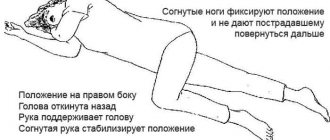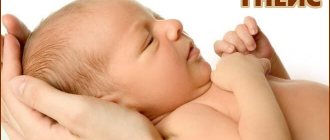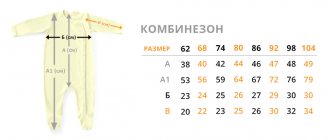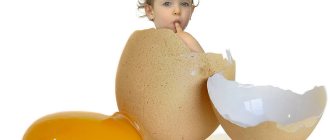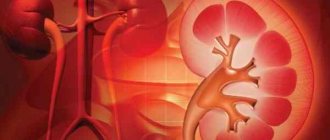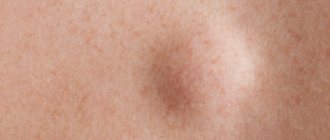From the birth of the little man, his growth and development are closely monitored by the local pediatrician. And one of the most important indicators of this development is a change in head circumference. Correct growth of the head indicates, first of all, the normal development of the brain and nervous system. The size of a child’s head by age should change in accordance with established standards, or be as close to them as possible. Otherwise, doctors begin to sound the alarm and examine the baby for abnormalities. This indicator is especially important in the first year of a baby’s life.
At what age should this significant event occur?
There is no clear answer to this question. Even in children who are completely healthy, the timing of the onset of independent head retention can vary significantly; What can we say about babies who have had to endure birth trauma or when they have any health problems.
It is considered normal if a child at the age of 3 months, while in an upright position, holds his head at the level of his body, and also lifts and holds it for up to one minute while lying on his tummy. But this pattern is not always observed - there are cases when children begin to hold their head a little earlier.
If your baby is already three months old and has not yet mastered this skill, then you should consult a neurologist to identify possible neurological abnormalities.
If the child starts holding his head up too early
Unfortunately, this phenomenon cannot be regarded as a positive moment in the development of the baby, especially if it happens in the first month of life. Most often, such early retention of the head may be a signal of high intracranial pressure or increased tone of the cervical muscles, which requires immediate consultation with a neurologist and appropriate therapy.
A child aged one to one and a half months should not normally be able to hold his head up without the help of his mother. When you pick him up, feed him or bathe him, you must always support his back and buttocks with one hand, and the head and shoulders of your baby with the other. If you do not do this, you can damage his delicate cervical vertebrae, which can lead to serious consequences.
Causes of a bulging forehead
Forehead prominence can have both physiological and pathological causes.
The plasticity of the cranium facilitates and speeds up the birth process, minimizing the risk of injury to mother and baby. The slight compression of the skull that occurs as the fetal head passes through the birth canal usually corrects itself in the first weeks of life. However, in some cases the deformation persists much longer. A high forehead in a newborn child can be explained by both physiological and pathological factors.
Physiological reasons
If the forehead of a child 2 years and older protrudes forward, this may not be a pathology, but a consequence of the individual anatomical features of the structure of the skull. In this case, you should pay attention to whether any of your relatives have a similar appearance trait, since it is often inherited.
Neonatologists believe that the physiological reason that an infant's forehead protrudes forward is the divergence of the sutures in the frontal part of the skull. This is explained by the natural instability of the brain in a newborn - it changes in volume, sometimes decreasing, sometimes increasing. Such changes arise against the background of the infant’s body’s adaptability to new conditions of existence during the transition to the external environment. Due to the fact that the volume of the skull changes along with this, such transformations do not cause harm to the child. Otherwise, compression of the brain tissue by the cranial bones could lead to severe cerebral damage. When the baby’s condition stabilizes, the normal shape of the skull is restored.
Pathological causes
A high forehead is one of the signs that a child has hydrocephalus
The main pathology that causes such a specific symptom as a large forehead in a child is a congenital increase in intracranial pressure. Increased ICP is not an independent disease, but a symptom that may indicate that the baby has a serious illness - hydrocephalus, or dropsy of the brain. Factors contributing to the occurrence of this disease include:
- increased production of cerebrospinal fluid;
- poor absorption of cerebrospinal fluid;
- impaired circulation of cerebrospinal fluid.
Hydrocele of the brain detected in a newborn means that the disease began to form during the period of intrauterine development of the fetus.
Factors predisposing to the development of hydrocephalus are:
- genetic or chromosomal mutations;
- infection of the fetus through the mother's blood with various infections that affect brain tissue - bacterial meningitis, arachnoiditis, encephalitis;
- significant degree of prematurity - less than 7 months;
- insufficiency of placental function due to its underdevelopment;
- pathological course of pregnancy - gestosis;
- the mother has diseases caused by metabolic disorders (diabetes mellitus).
Birth trauma can also lead to hydrocephalus - head injuries received by a child during unfavorable development of childbirth. Due to rupture of the cephalic blood vessels, hemorrhage occurs into the cavity of the cranium.
Another fairly common pathology, due to which the frontal bones can protrude forward: rickets, which occurs in children aged one to two years. The disease is caused by a deficiency of calcium in the bones. The lack of this element in the child’s body leads to softness of the bone tissue, which contributes to its deformation - curvature of not only the legs and chest, but also the skull.
How to help your baby learn to hold his head?
By the age of three weeks, when the umbilical wound has already healed, it is necessary to begin to gradually lay the baby on the tummy. This is done immediately before feeding in order to facilitate the passage of gases and prevent intestinal colic. This position also helps to train the child’s neck muscles - the instinct of self-preservation forces him to raise his head and turn it to the side, because only in this way can the little one breathe normally.
It cannot be said that all three-week-old babies like such exercises. Very often they show their dissatisfaction, cry and be capricious. At the same time, moms and dads feel sorry for them and try to put them on their tummy as rarely as possible. This is the gravest mistake of loving parents, which can subsequently lead to muscle hypotonia and retardation in the physical development of their children.
How are children's head sizes measured?
You can regularly measure the volume of the tiny head yourself and write down all available measurement indicators in a special notebook. For this procedure, you will need a soft tape with a clear division into centimeters.
The child should be placed on a couch, sofa or table. It is important that the baby does not cry or scream during the manipulation, since the results obtained when the baby is overexcited may not be entirely correct.
The measurement is taken at the eyebrow line. You just need to put the tape on your head to the indicated level and write down the result. This way you can monitor the growth status of your baby. If there are deviations, you will be the first to know about them and will be able to react quickly in such a situation.
Don't worry, in any case, symptoms of abnormalities quickly appear, and you will immediately see a disturbance in head growth. It is much more important not to hesitate and urgently seek help from specialists.
In what sequence does this process occur?
By 1–1.5 months, your baby will begin to try to lift his head from a position lying on his tummy, and at 2 months he will try to hold it while in your arms in a vertical position. At this age, you can try to pull the child up by the arms from a horizontal position on the back - he will already try to keep his head level, and not limply throw it back, as before.
Next, your baby will hold his head more and more confidently every day. But this does not mean at all that now you should not hold it when you pick up the child - after all, his neck muscles are still very weak. And only by 4 months the need for such care completely disappears.
Well, at the age of five months, your baby already looks at the world with confidence and interest with his head held high, turns it left and right, satisfying his curiosity and without feeling the slightest difficulty.
Age appropriate
The girth of the head of newborn full-term babies is on average 35 cm. However, for girls this parameter is usually slightly smaller than for boys. Up to one year, the numerical value of this indicator increases quite quickly, while in children of different sexes it differs by about 1 cm.
So, by the end of the first month, the head circumference of boys and girls is about 37 and 36.5 cm, respectively, at 2 months – 39 and 38.5 cm, at 3 months – 40–41 cm.
By 4 months it can be 42–43 cm and equal to the chest circumference. After this age, the breasts should always have a larger volume, otherwise there is reason to assume developmental abnormalities in infants. By 6 months, the head circumference is 43–44 cm. From this moment on, the baby’s overall growth and weight gain slow down. The head also grows more slowly: about 0.5 cm per month. In a one-year-old toddler, its circumference can average 46–47 cm.
In total, over the first 12 months, the volume of the head increases by approximately 12 cm. During this period, the convergence of the cranial bones should occur. At the latest, by one and a half years the fontanel should completely close. If everything happens exactly like this, and during the second year of life the size of the child’s head changes according to age, we can talk about the full and correct development of the small brain.
By the age of 2, the head circumference reaches 48–49.5 cm; a year later, a boy’s head circumference is approximately 50.5 cm, a girl’s – 49.5 cm. From the age of 4, growth slows down even more. The increase in volume is now increasing by an average of 0.5 cm per year. Thus, by the age of 15, this figure in a healthy child should be 54–55 cm.
However, if the child was low birth weight or was born premature, the generally accepted standards for head circumference are not relevant for him, since they were initially much smaller. In each specific case, the doctor will monitor the general dynamics of the child: weight gain, height, the emergence of certain skills, and correlate them with the size of the head: measuring only this in such cases is extremely uninformative for the doctor.
Don't panic if your baby's readings are slightly higher than normal or below normal. The hereditary factor plays a significant role in this. Perhaps the parents or relatives of the baby have a head that is slightly larger or smaller than the average. Your doubts will be dispelled by a pediatrician and geneticist.
What problems may arise and how to help the baby?
If it happens that your child has not learned to hold his head up by three months, then neurological problems most likely could not be avoided. Very often this can be a consequence of difficult or premature birth. A neurologist will help you find out the cause of this phenomenon and prescribe appropriate treatment.
If the cause of this phenomenon is weak muscle tone, then the doctor will prescribe you a special massage that eliminates this problem. If your baby was born a little earlier than the time prescribed by nature, then there is no need to worry at all - another month or less will pass, and he will catch up with his peers in physical development, gain the required weight, and his cervical vertebrae will also become stronger.
There are times when a child begins to hold his head not straight, but with a slight deviation to the right or left. To eliminate this deficiency, the neurologist will suggest you use a special pad. You will place your baby in the crib alternately on one side or the other, placing the pillow in a certain way and encouraging him to turn his head in different directions.
